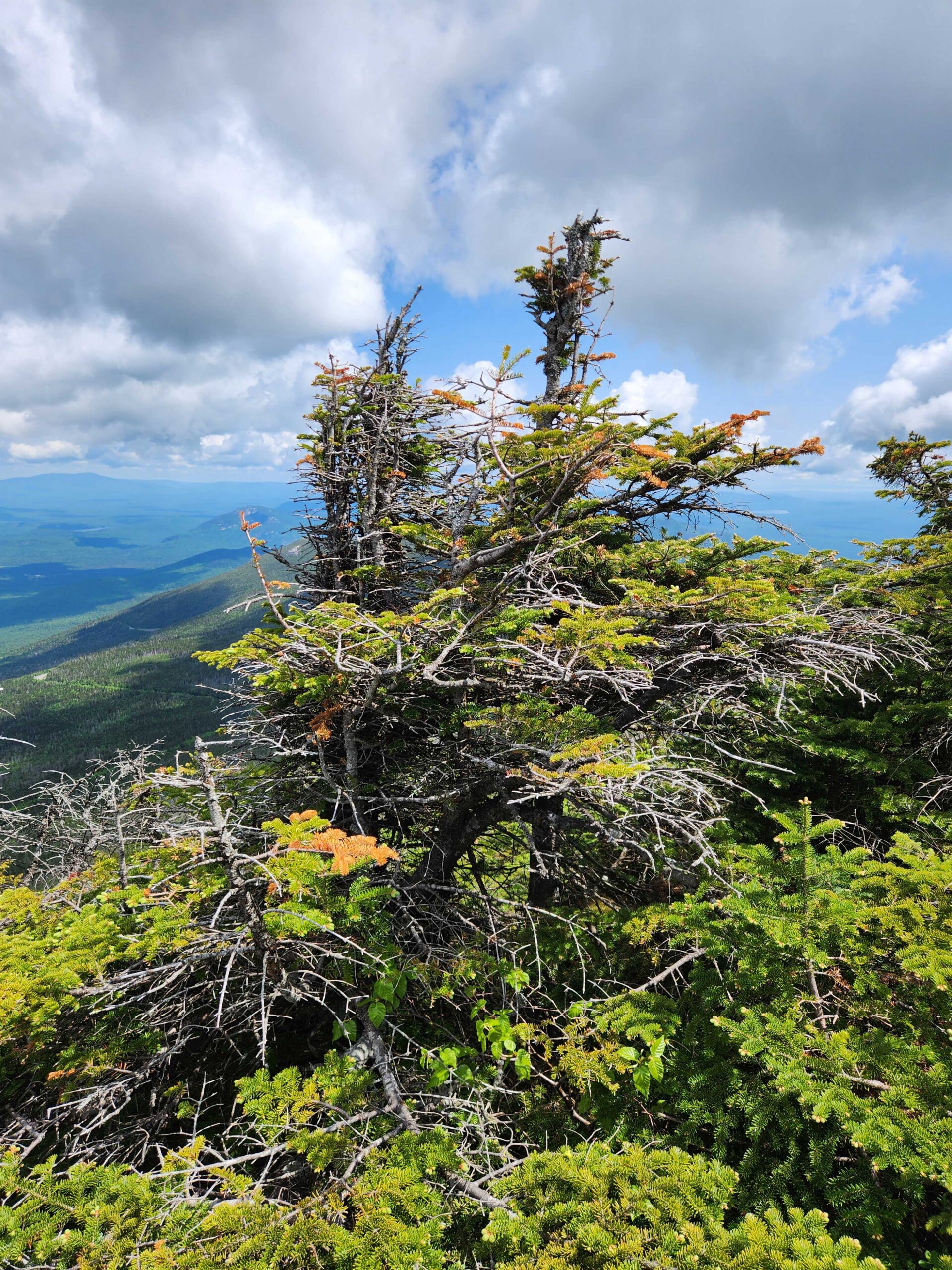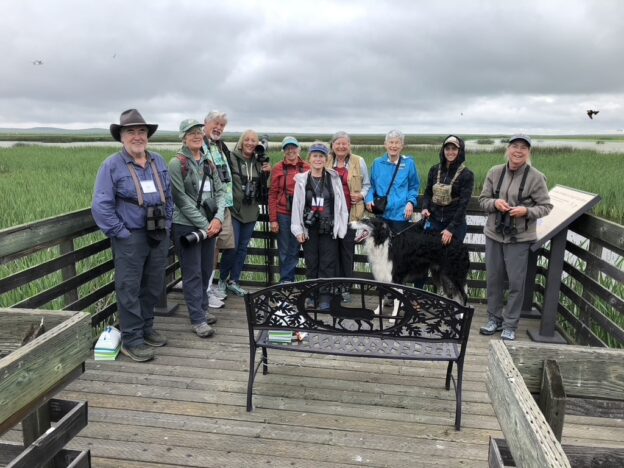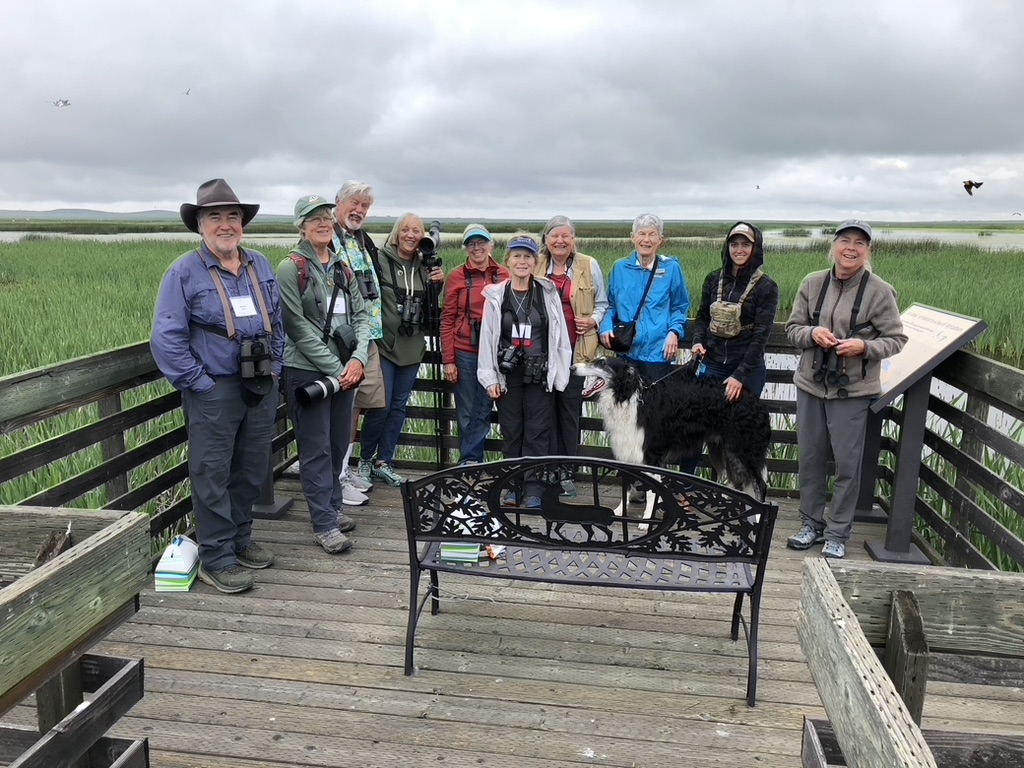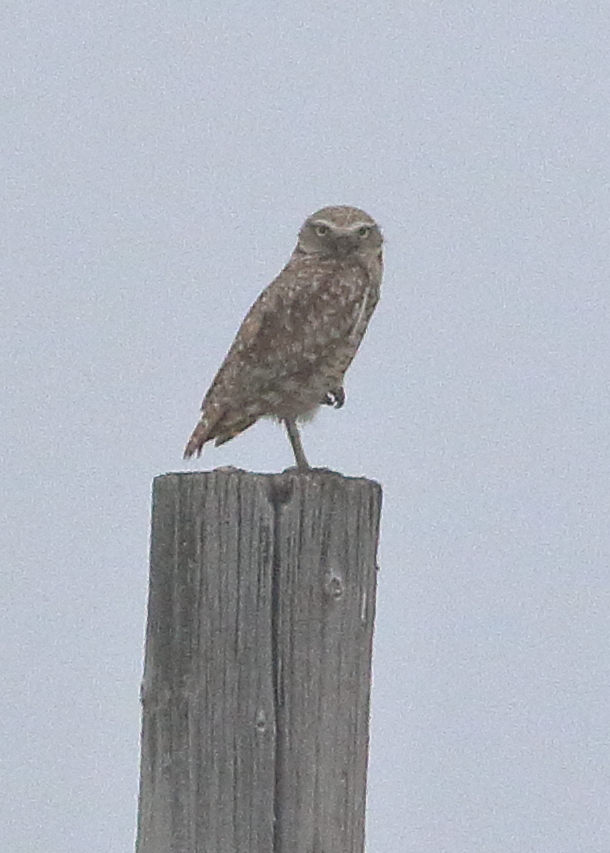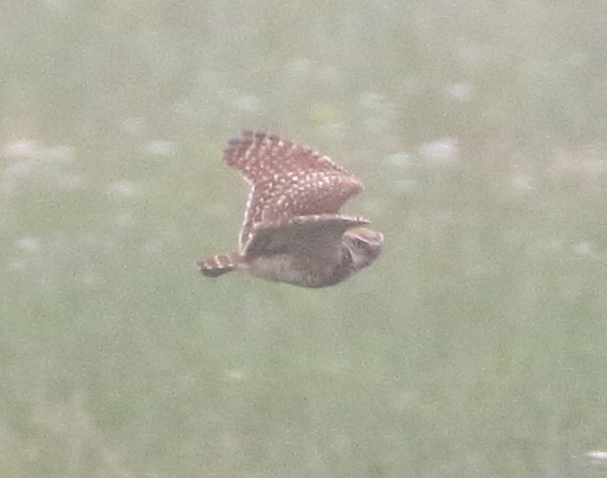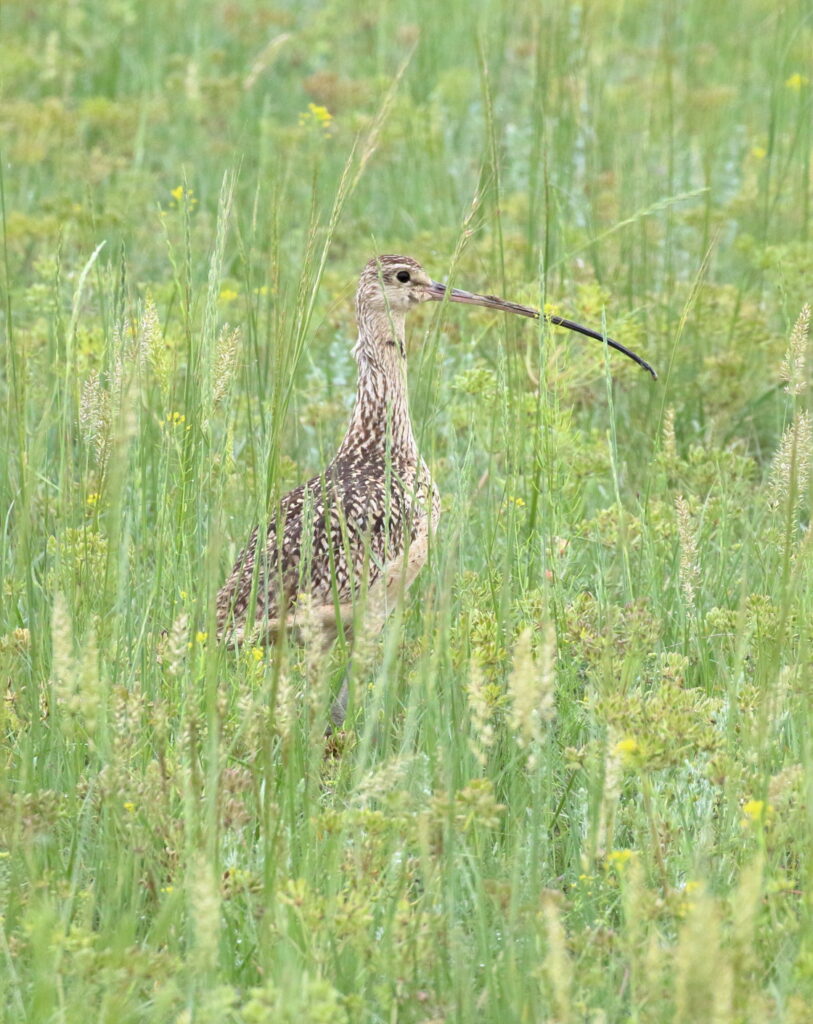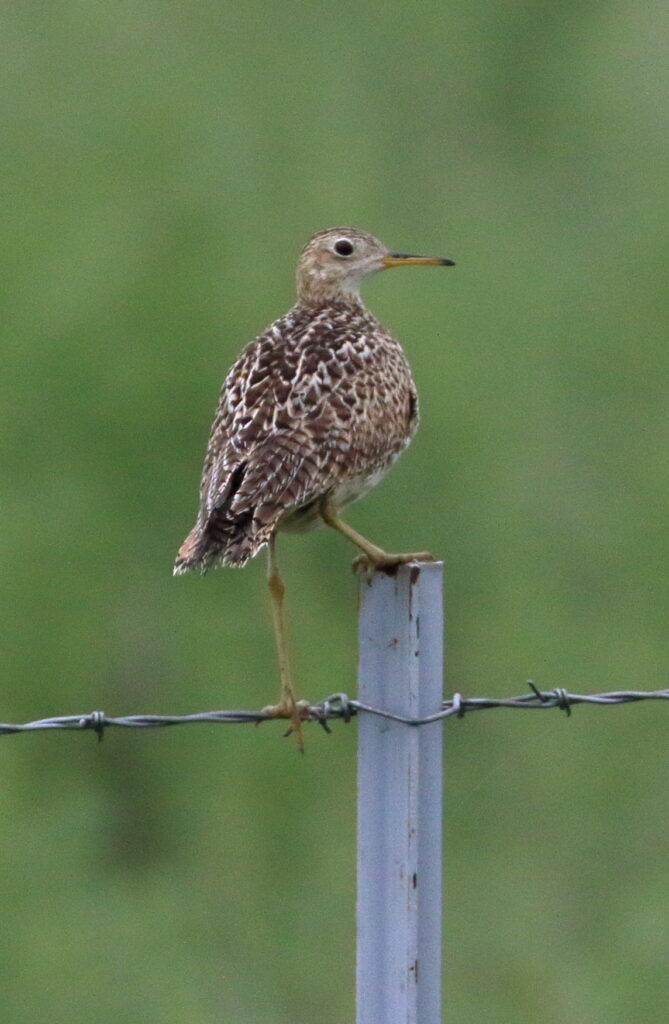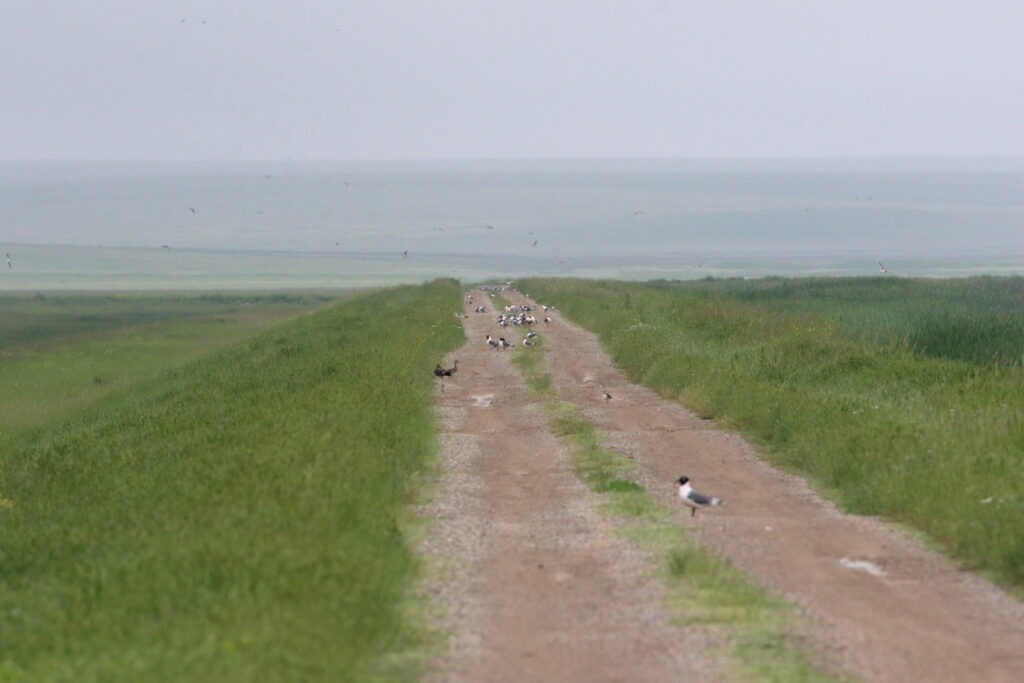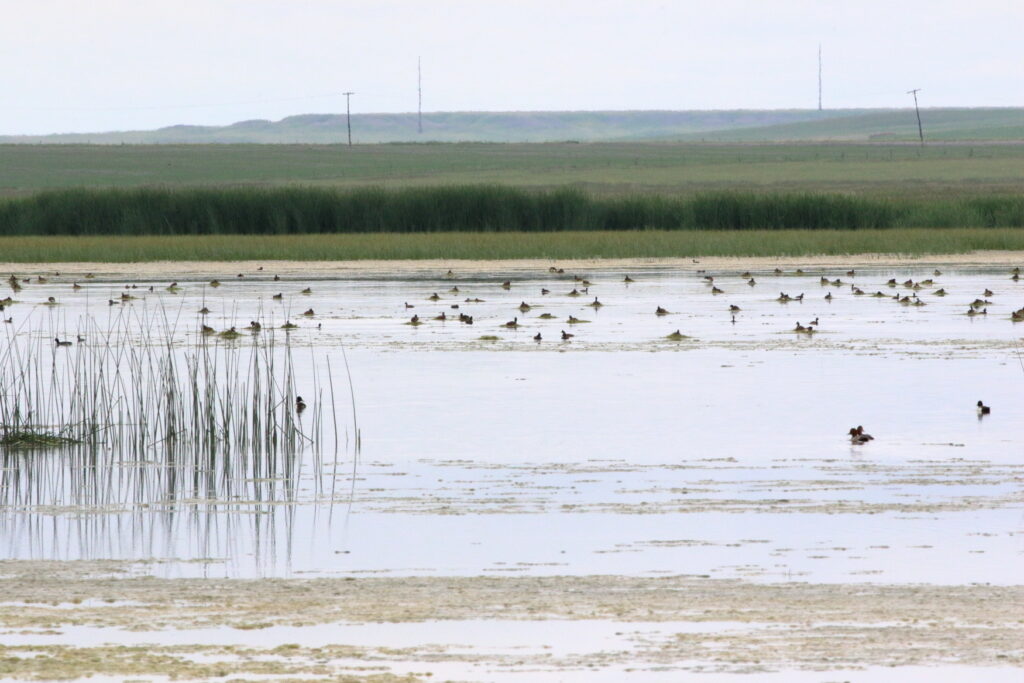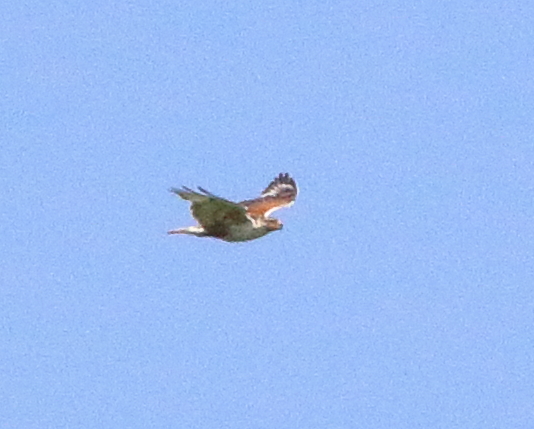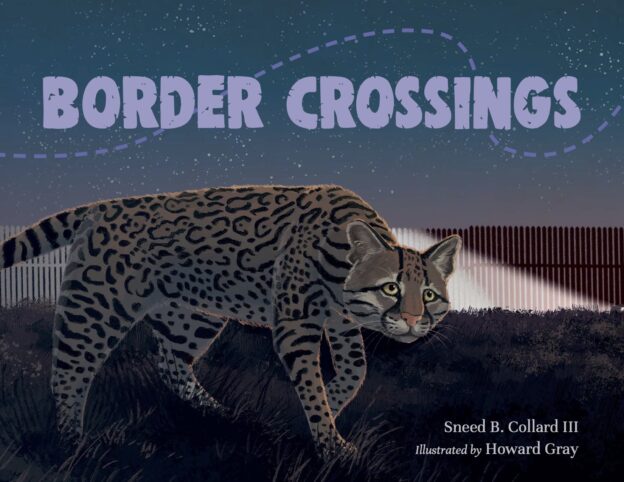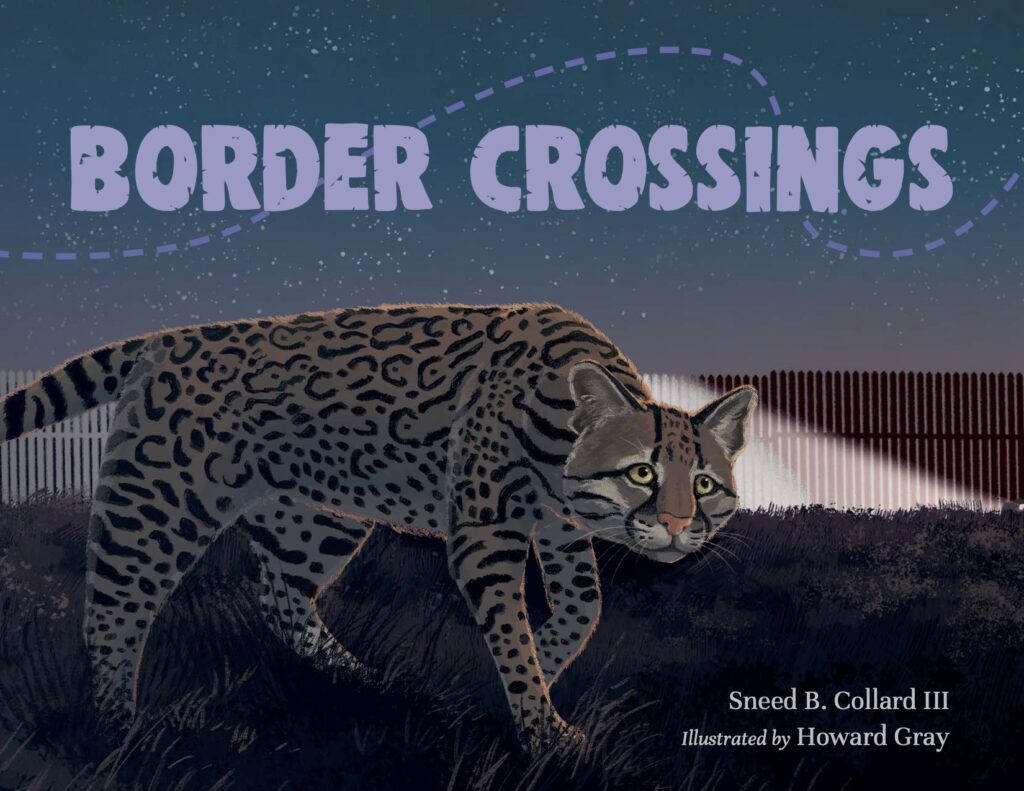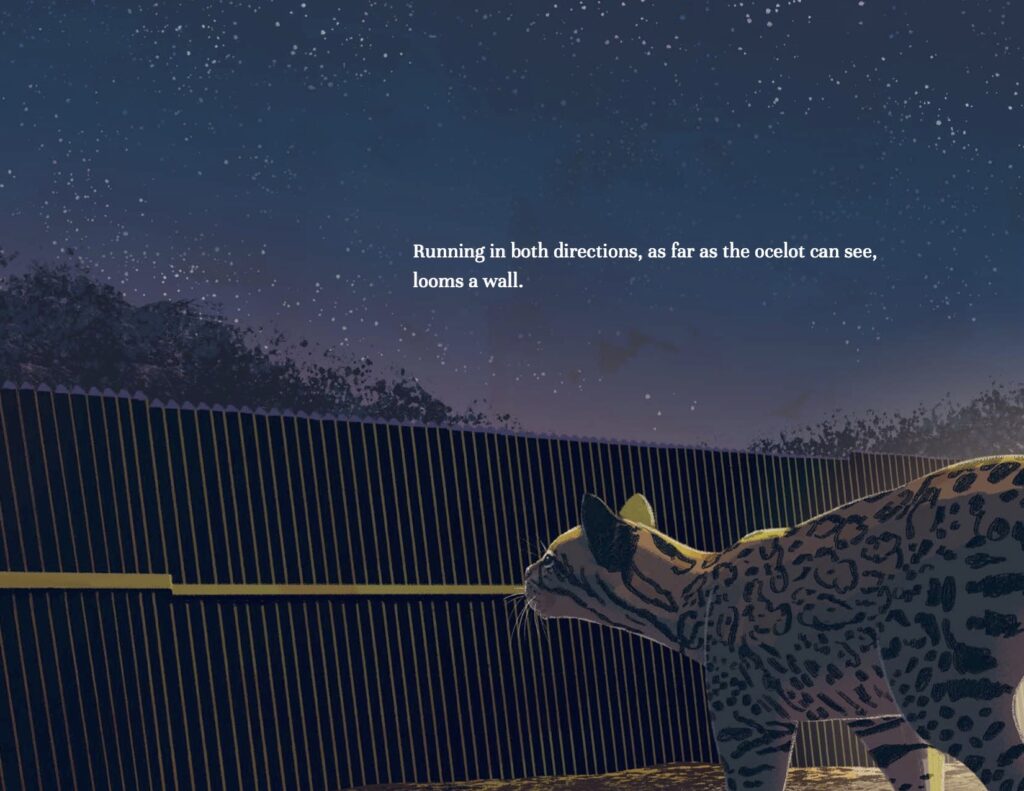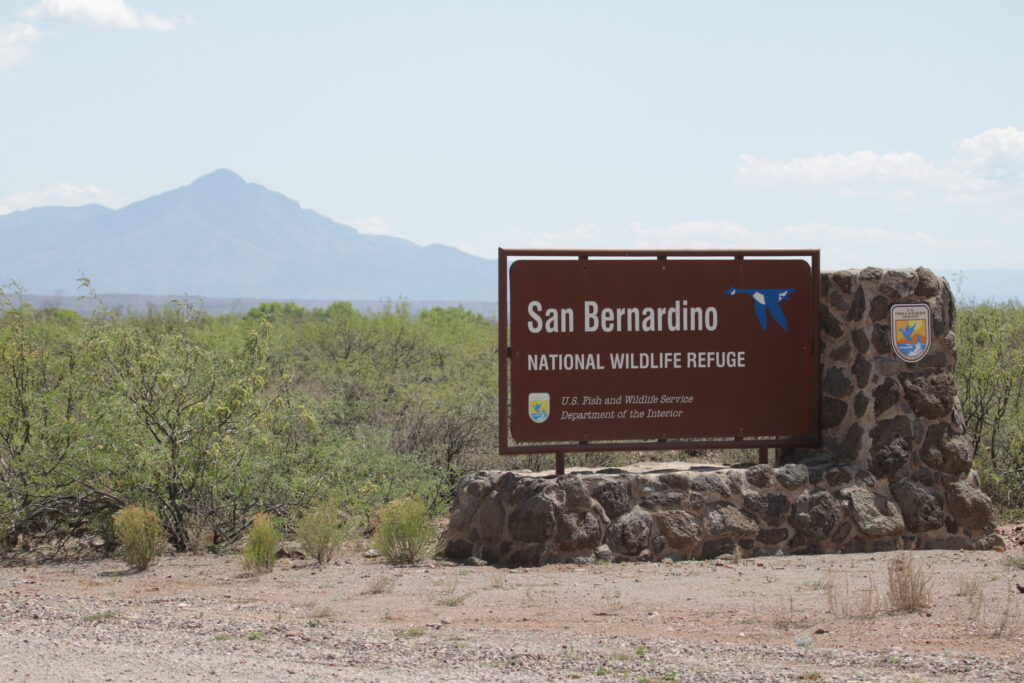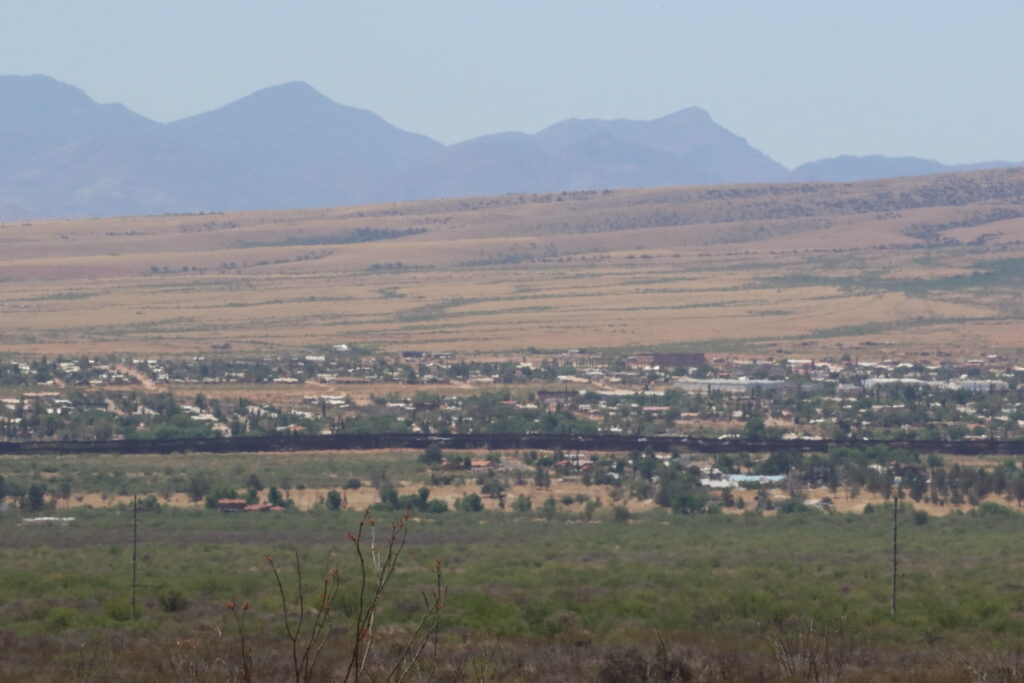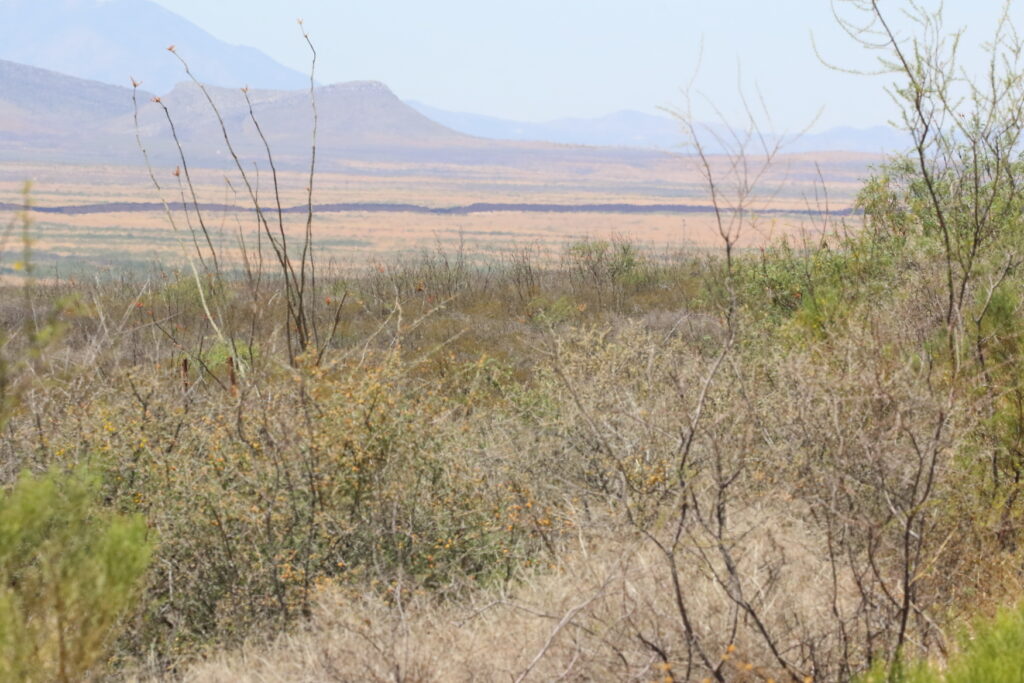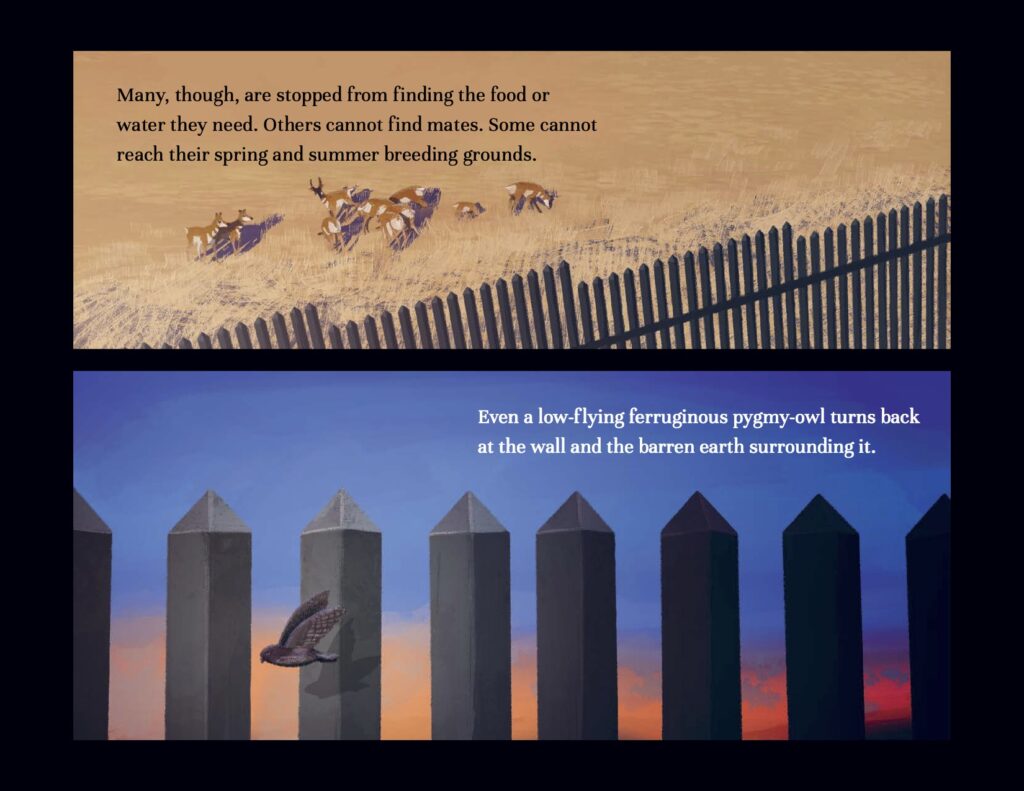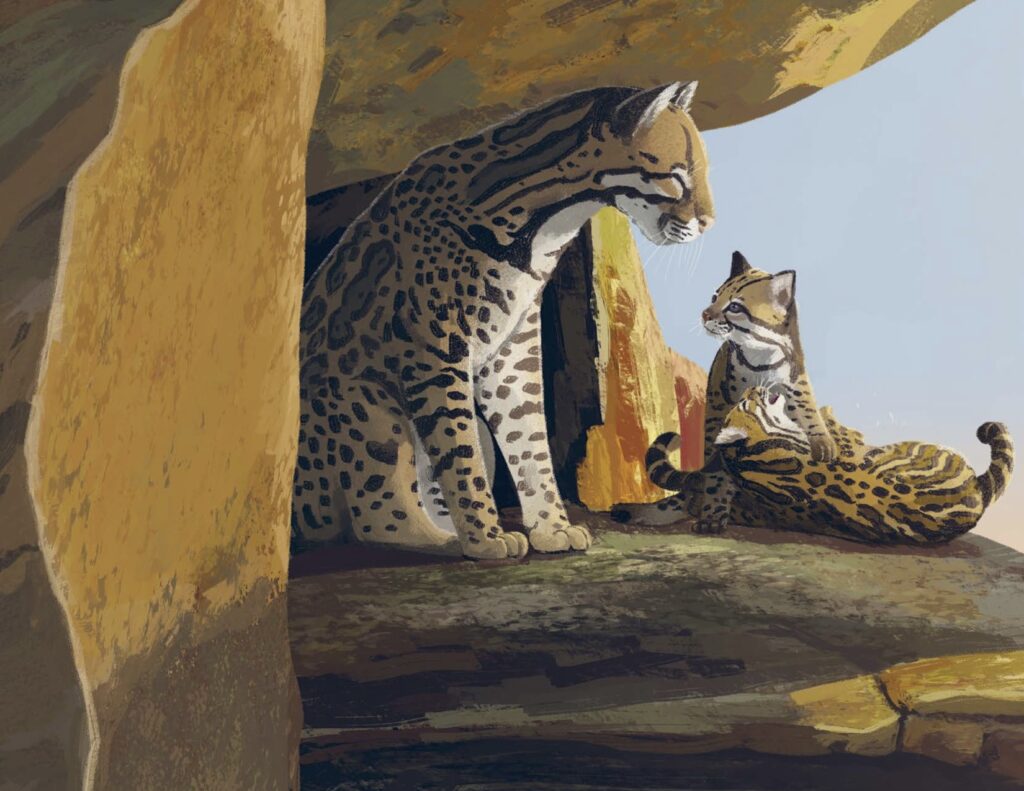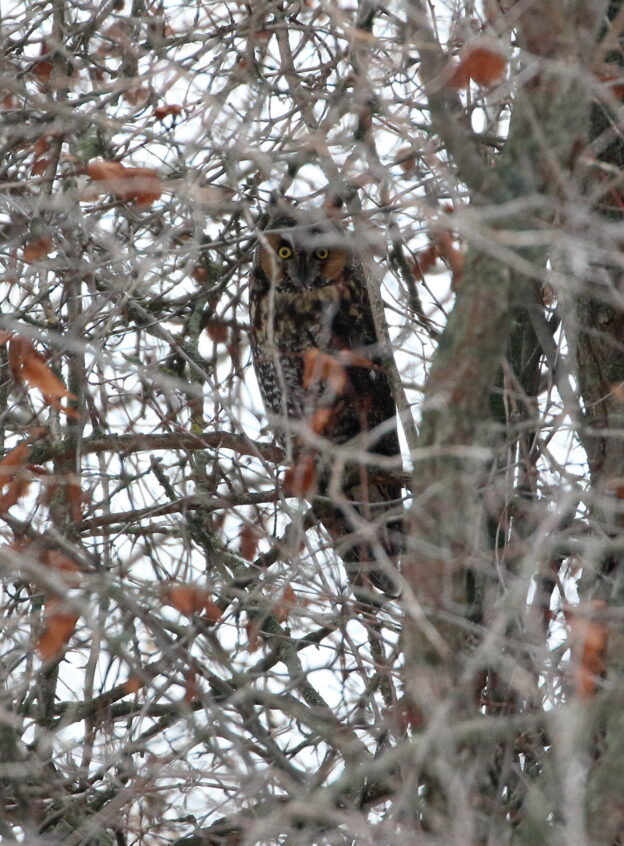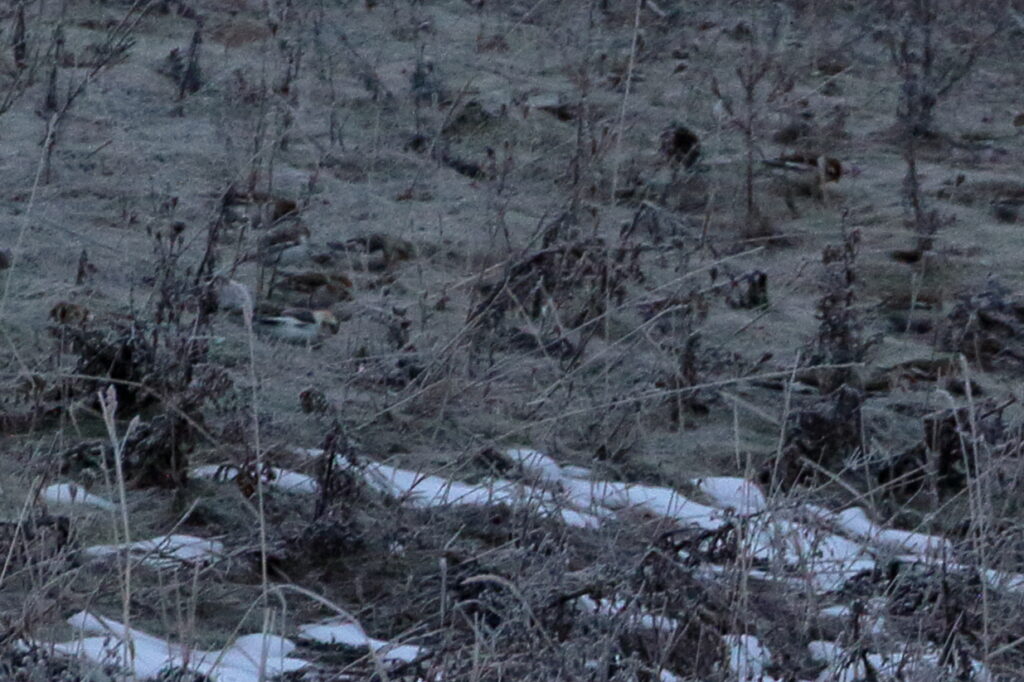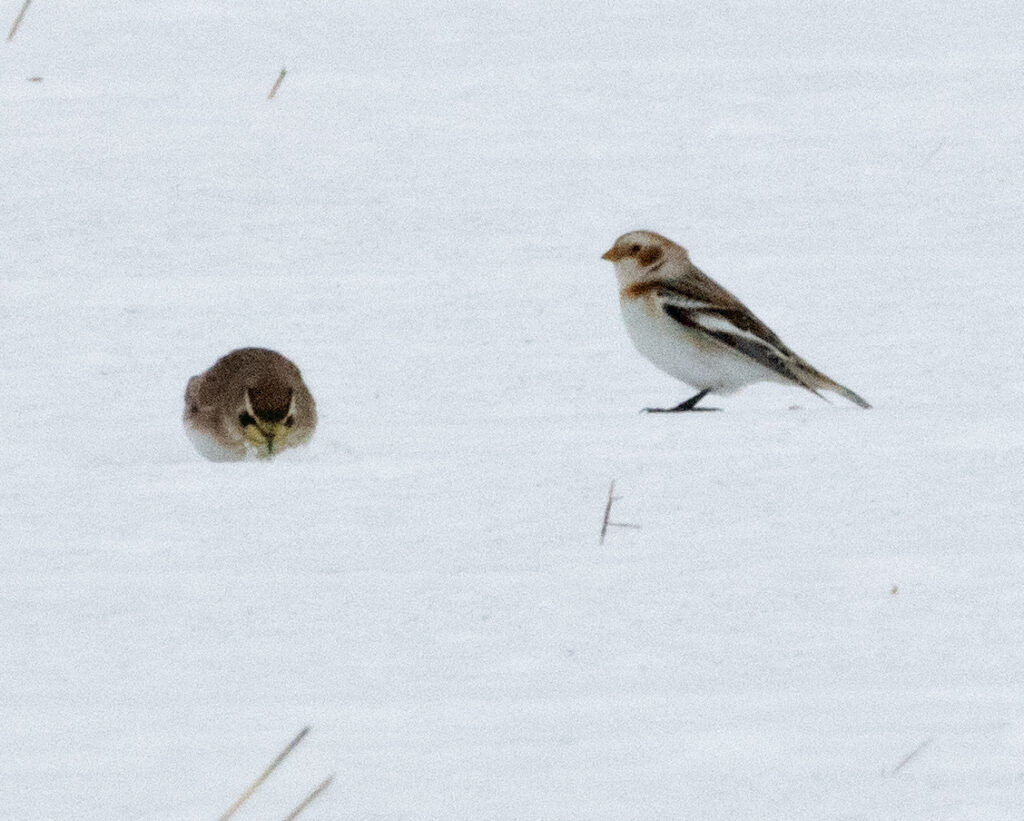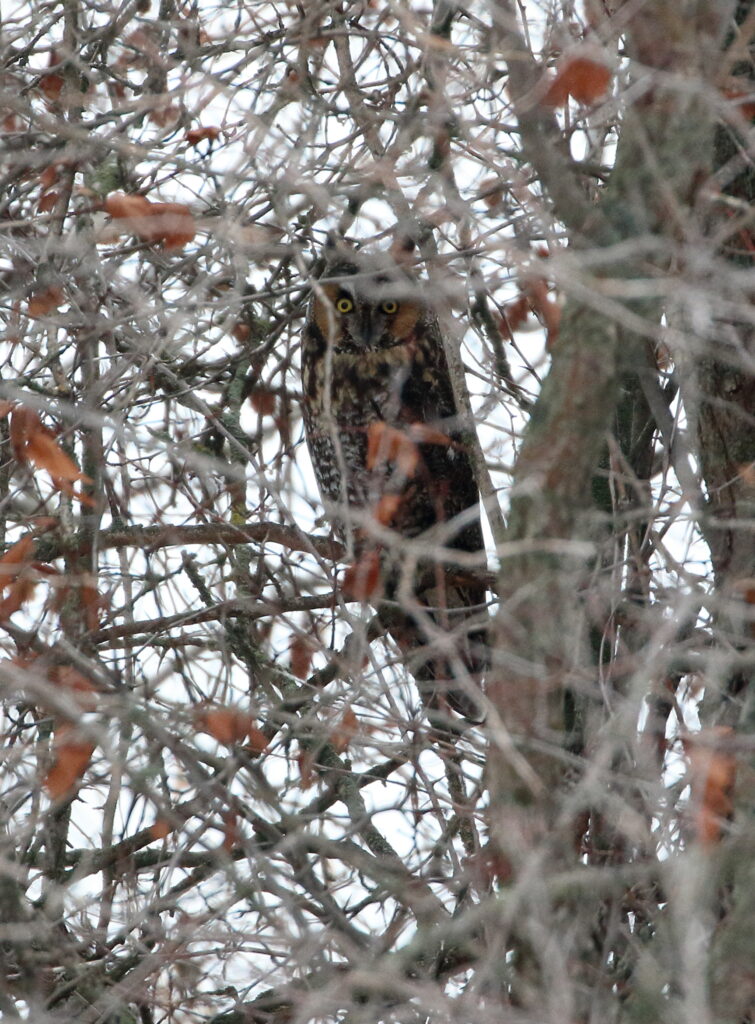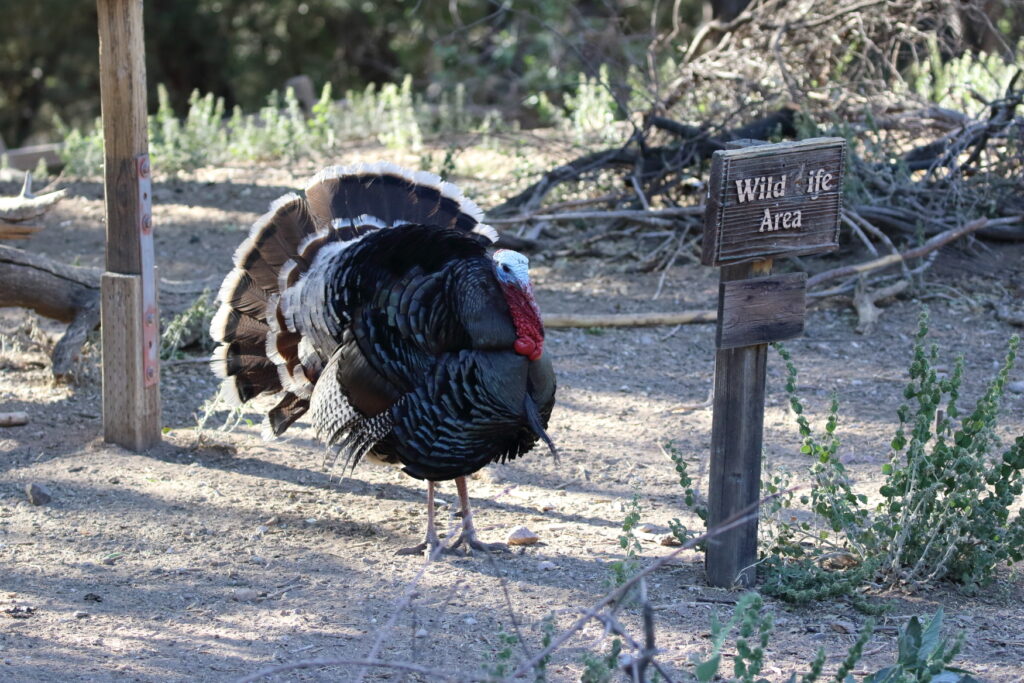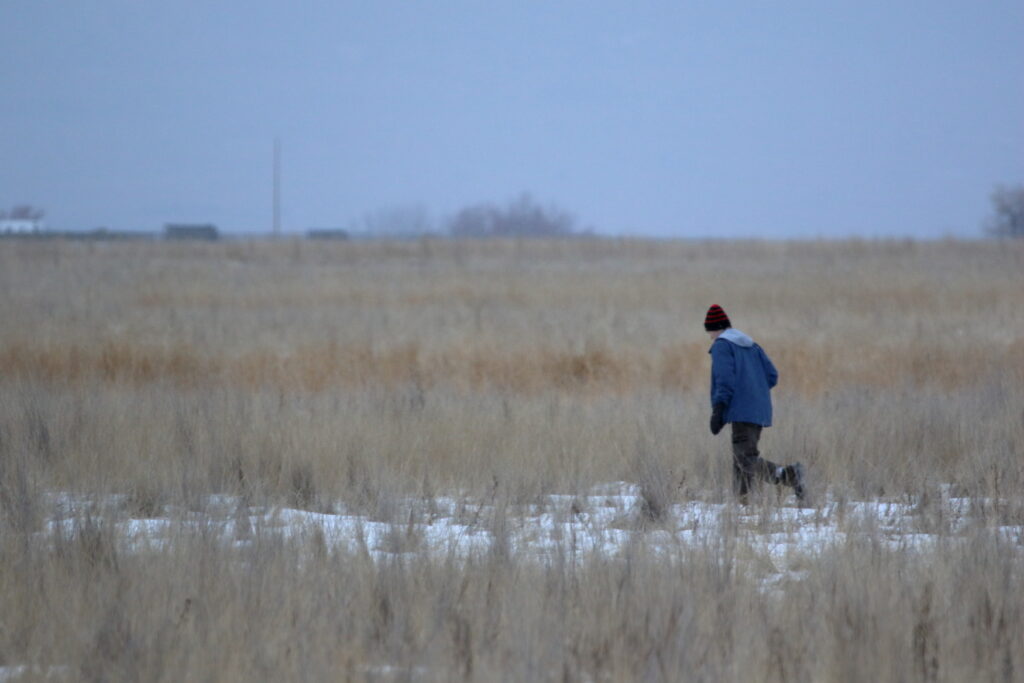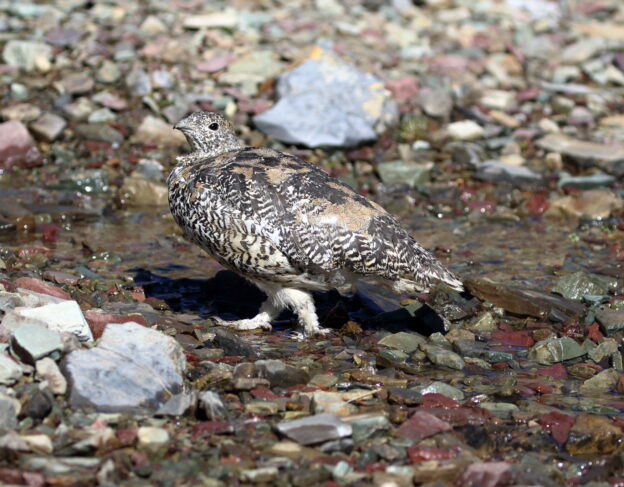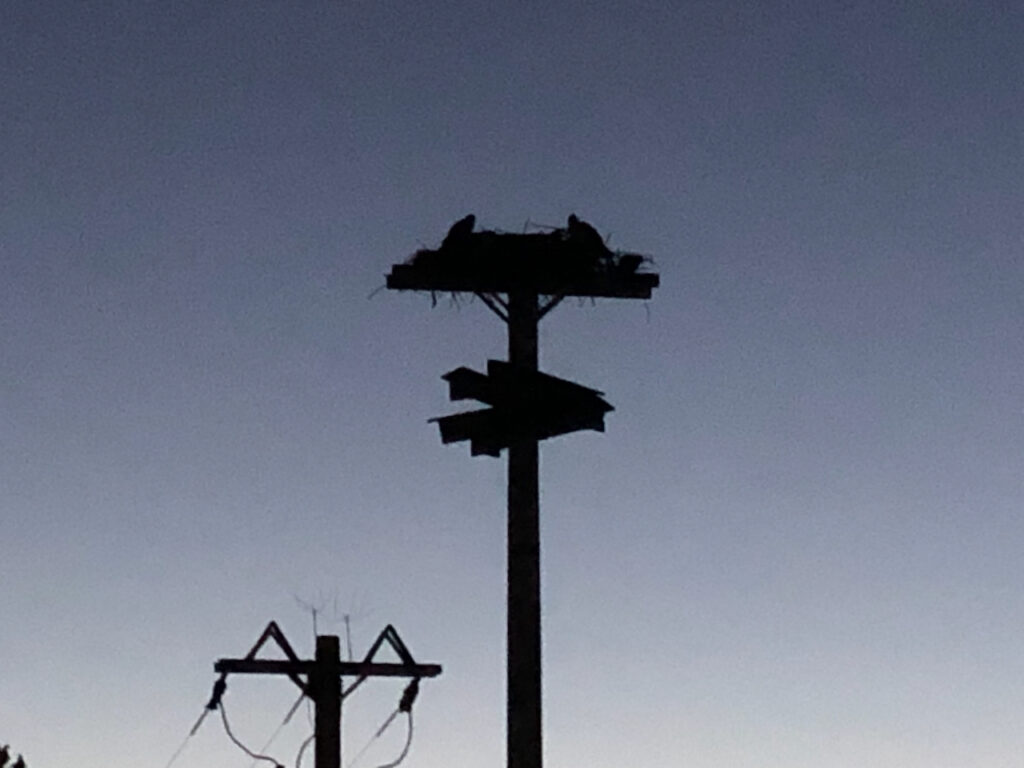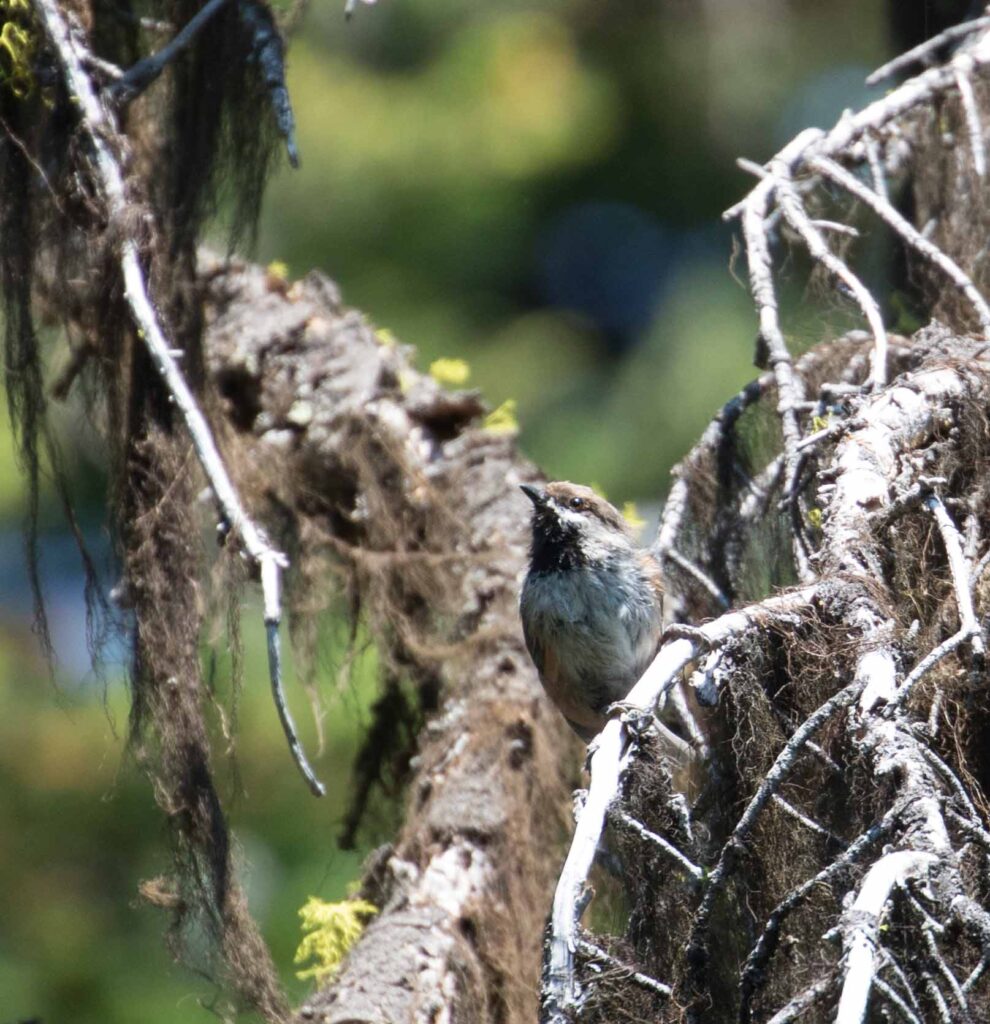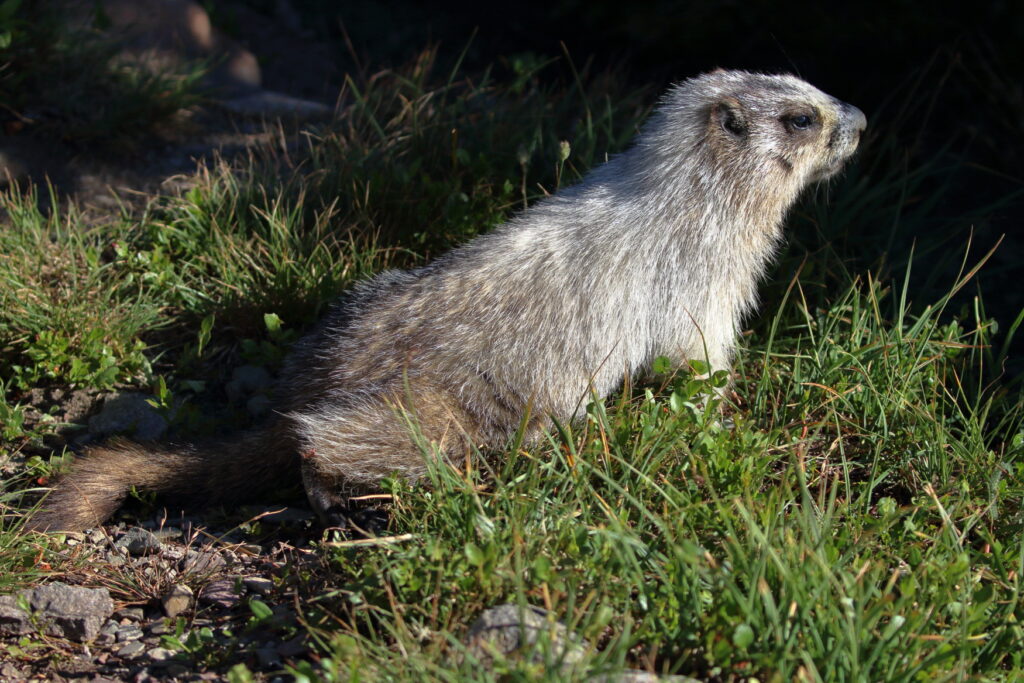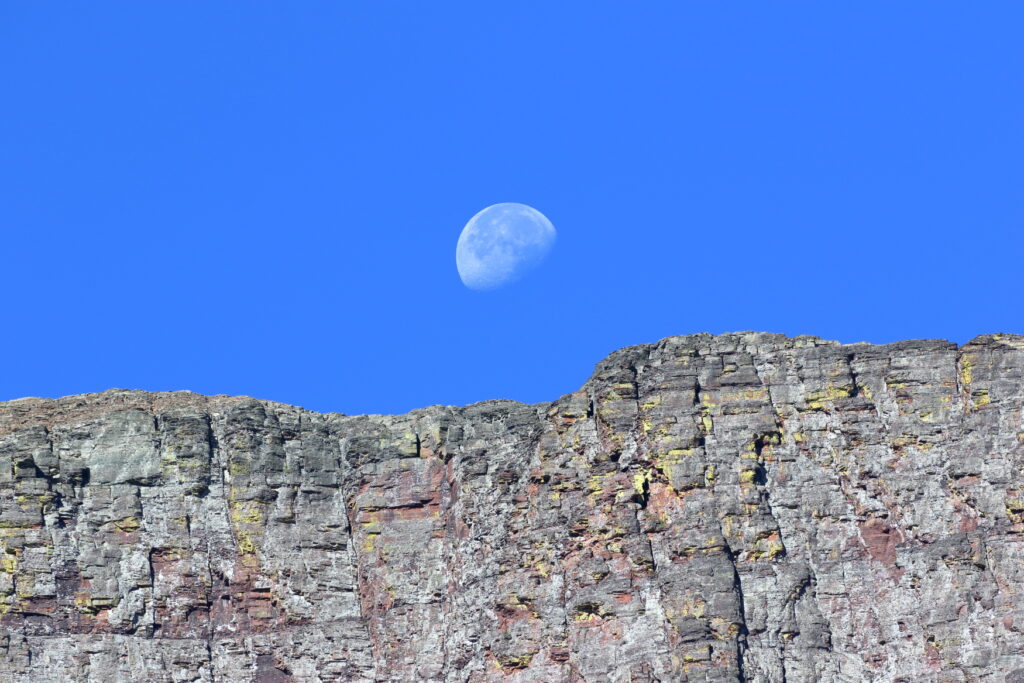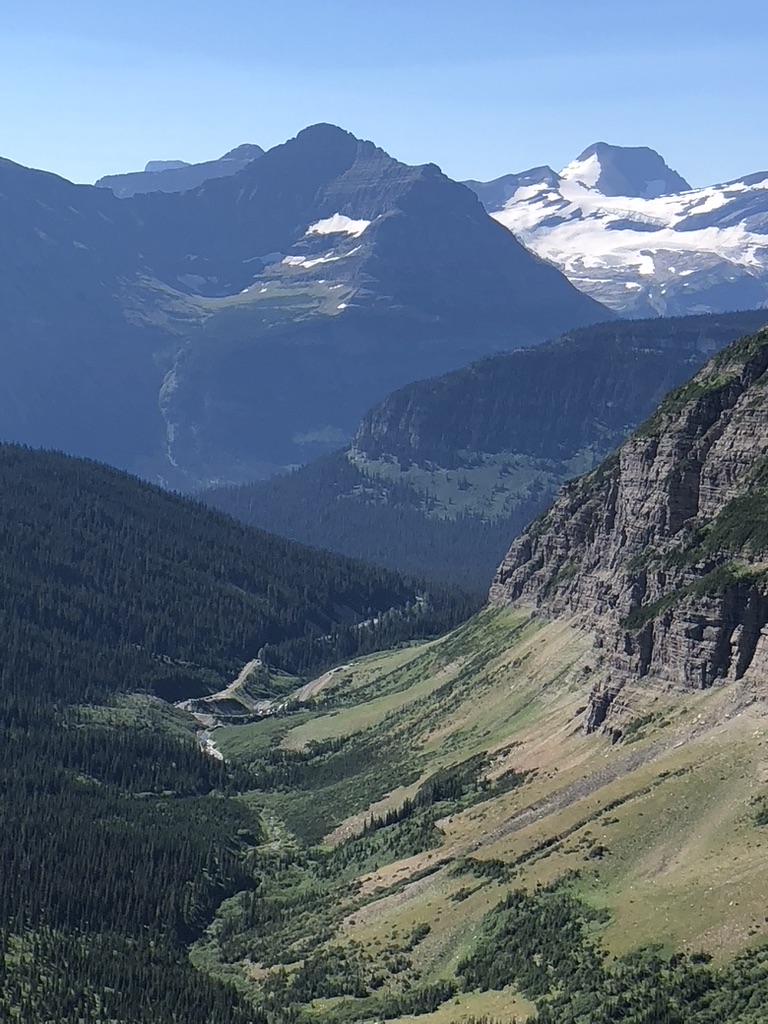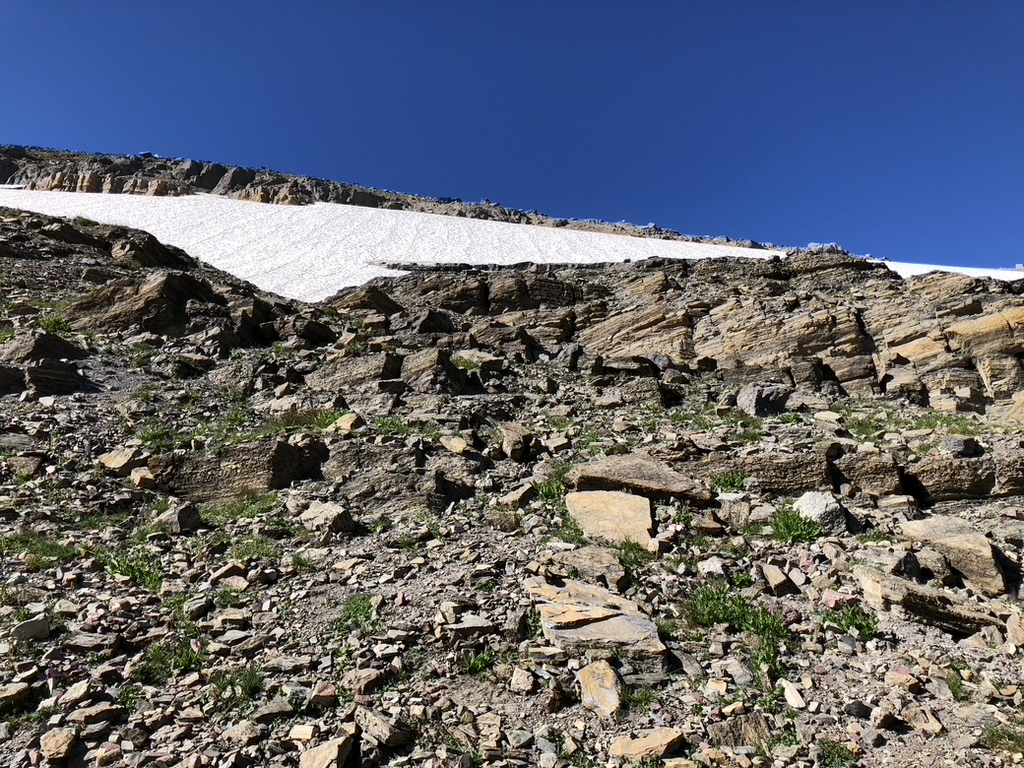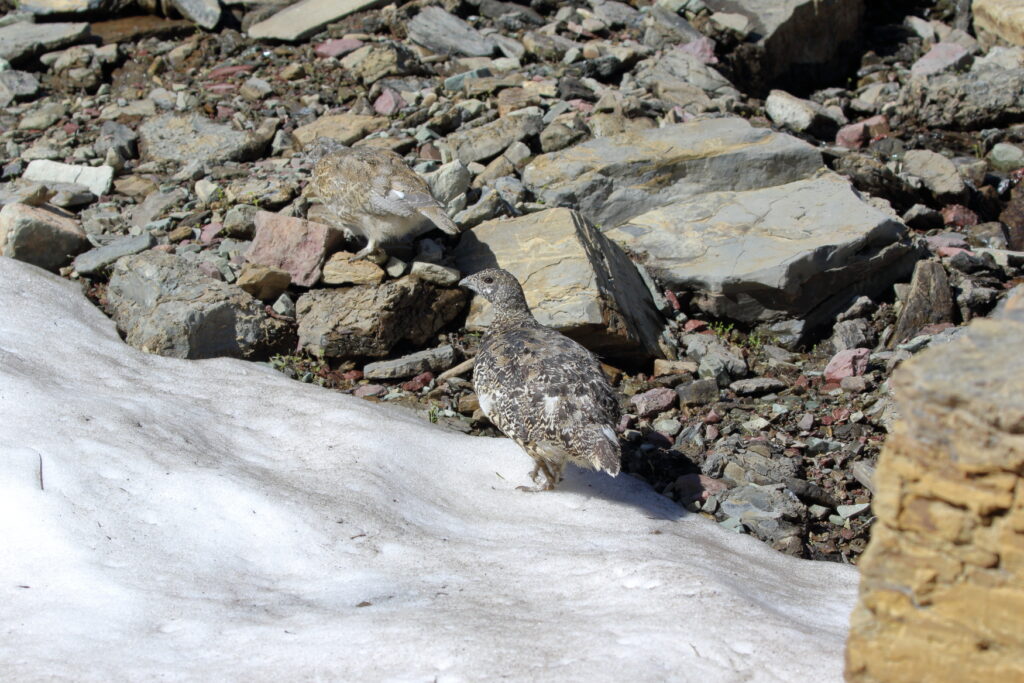The silhouette of Mt. Marcy, New York State’s highest peak, loomed in the distance as I bouldered the final steps up to the summit of Whiteface, the state’s fifth highest mountain. Upon reaching the top, I removed the bug net I’d been wearing, since the wind up here kept away the blackflies that plagued the rest of the alpine forest blanketing the mountain’s slopes. As a Peregrine Falcon soared by the cliffs underneath me, I picked a lichen-covered rock on which to take a seat and scarf down a PB&J sandwich.
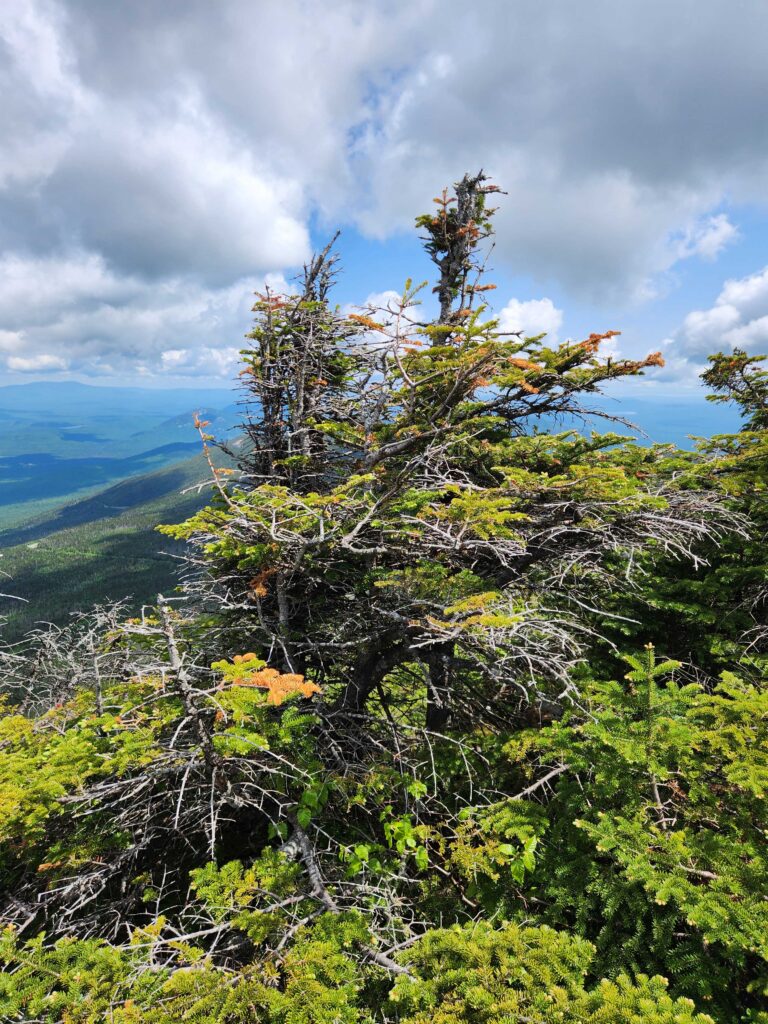
Ever since hearing about them, I’d always wanted to visit the Adirondack Mountains of northern New York, and as I munched away on my sandwich, I listened to the dry rattle of a Blackpoll Warbler from a stunted Balsam Fir thirty meters downslope of me. These warblers, which I’d never before observed on their breeding grounds, were one of the reasons I had driven up this mountain to begin with. Whiteface had extensive alpine habitat perfect for these high-altitude or high-latitude breeders. Several minutes later, an even bigger avian star sang to my right: a Bicknell’s Thrush.
The thrush’s descending song sounded like the musical representation of a loud whisper, and stood out sharply from both the sounds of other alpine bird species and the hikers complaining about the steep path to the summit. Bicknell’s Thrush, like the other Catharus thrushes, has a unique and haunting song that has caused many an American naturalist to write about it. Unlike the other thrushes in its genus, however, Bicknell’s has a tiny breeding range, encompassing only the highest mountains in the northeastern United States and the nearby Canadian maritime forests. Only 100,000 or so of these birds exist in the wild, and the region I was sitting in is a major stronghold for the species.
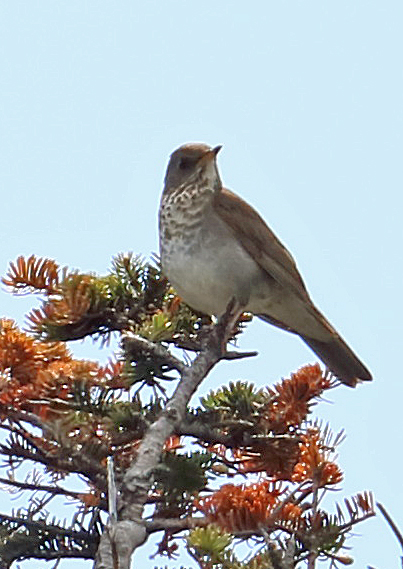
Whiteface Mountain may be only the fifth tallest peak in the Adirondacks, but it is by far the most visited by birders and other wilderness lovers. Franklin D. Roosevelt is to thank for this. Roosevelt, as the governor of New York and later the president of the United States, launched the building of a road to the peak of the mountain, providing jobs during the Great Depression as well as something arguably more important: access for all to a place that only the fit and the privileged could previously reach. Thanks to Roosevelt and his road, anyone can experience the thrill of being on top of the world—and hearing the ethereal songs of Bicknell’s Thrushes.
As far as ecosystems go, the Adirondacks hold two extremes not found farther south: the alpine forest home of Bicknell’s Thrushes and Blackpoll Warblers, and boreal bogs occupied by Black-backed Woodpeckers and Yellow-bellied Flycatchers. Before driving up Whiteface, I’d visited one of the area’s most famous bogs, the Bloomingdale Bog, to try my luck at the latter two species as well as a variety of others that were either less common or completely absent from the Pocono Mountains of Pennsylvania where I’d been working the last two months.
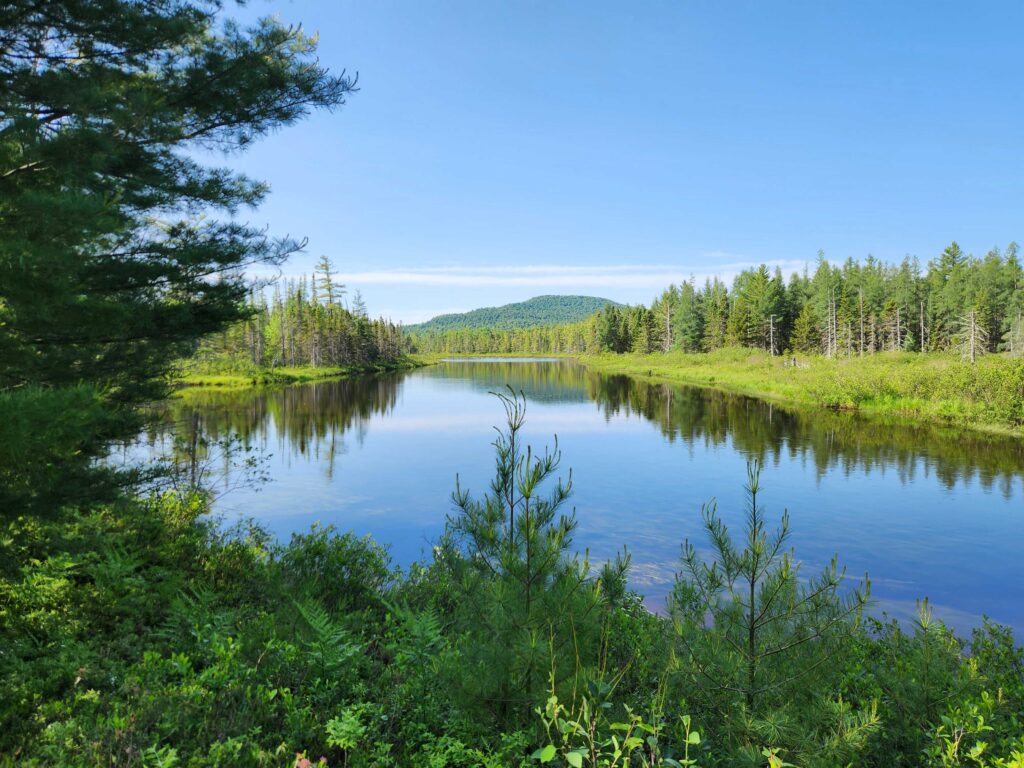
After parking at the entrance to the bog trail and coating myself in a three-inch layer of bug spray, I headed into the woods, and immediately recognized that the songs emanating from the brush and the trees differed from what I was used to in the Poconos. In Pennsylvania, a day with a White-throated Sparrow was considered a treat. Here, by comparison, their “Old-Sam-Peabody-Peabody-Peabody” echoed from every branch. Nashville Warblers dominated the chorus, barely allowing any other warbler species a chance to speak, and I spotted a few Hermit Thrushes hopping along the path. Half a mile from the parking lot, the trees gave way to large, wet meadows full of Alder Flycatchers, Common Yellowthroats, and the flies they fed on. Unfortunately, the flies fed on me, too, although the bug net around my head provided some defense.
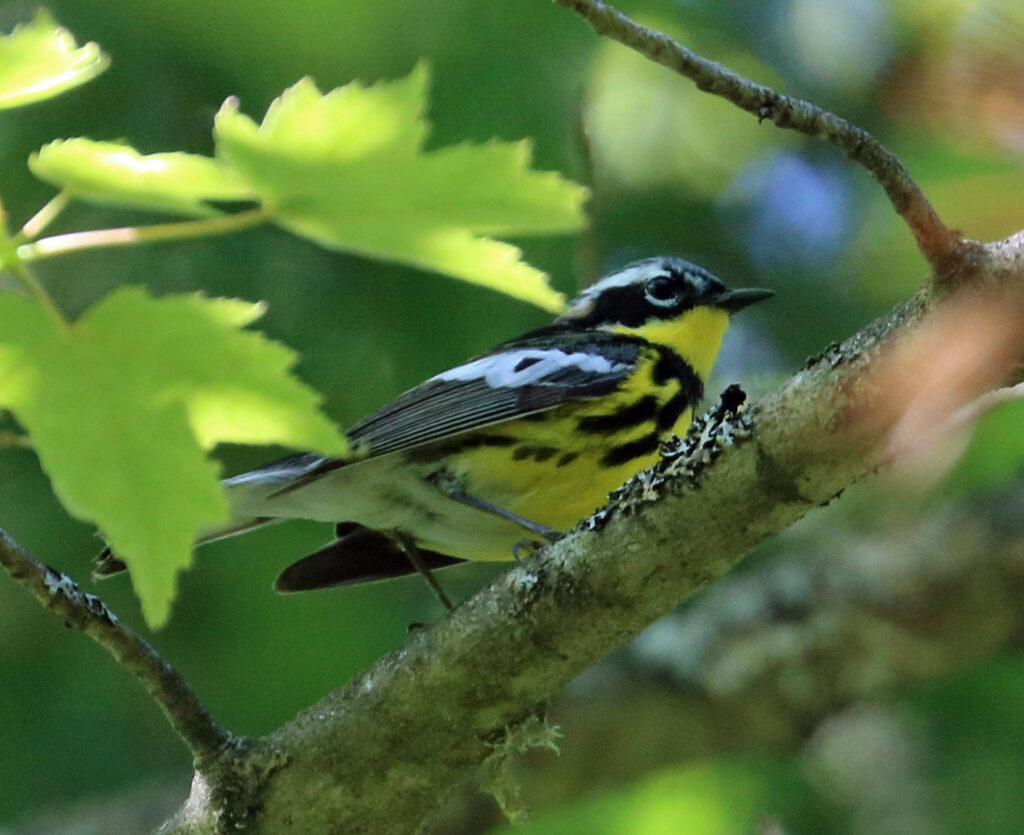
Hiking the trail, it took about an hour to find my first target, and it flew right up to me. While I’d seen Canada Jays before, I’d never seen them on the East Coast, and the bogs of the Adirondacks are a well-known spot for these northern breeders. So well-known, in fact, that visiting birders regularly feed Canada Jays at the Bloomingdale Bog—something that this bird evidently knew when it chose to perch only a feet from my face. After determining that I had no morsel to give, it retreated back into the conifers, but not before I’d gotten dozens of great pictures of it.
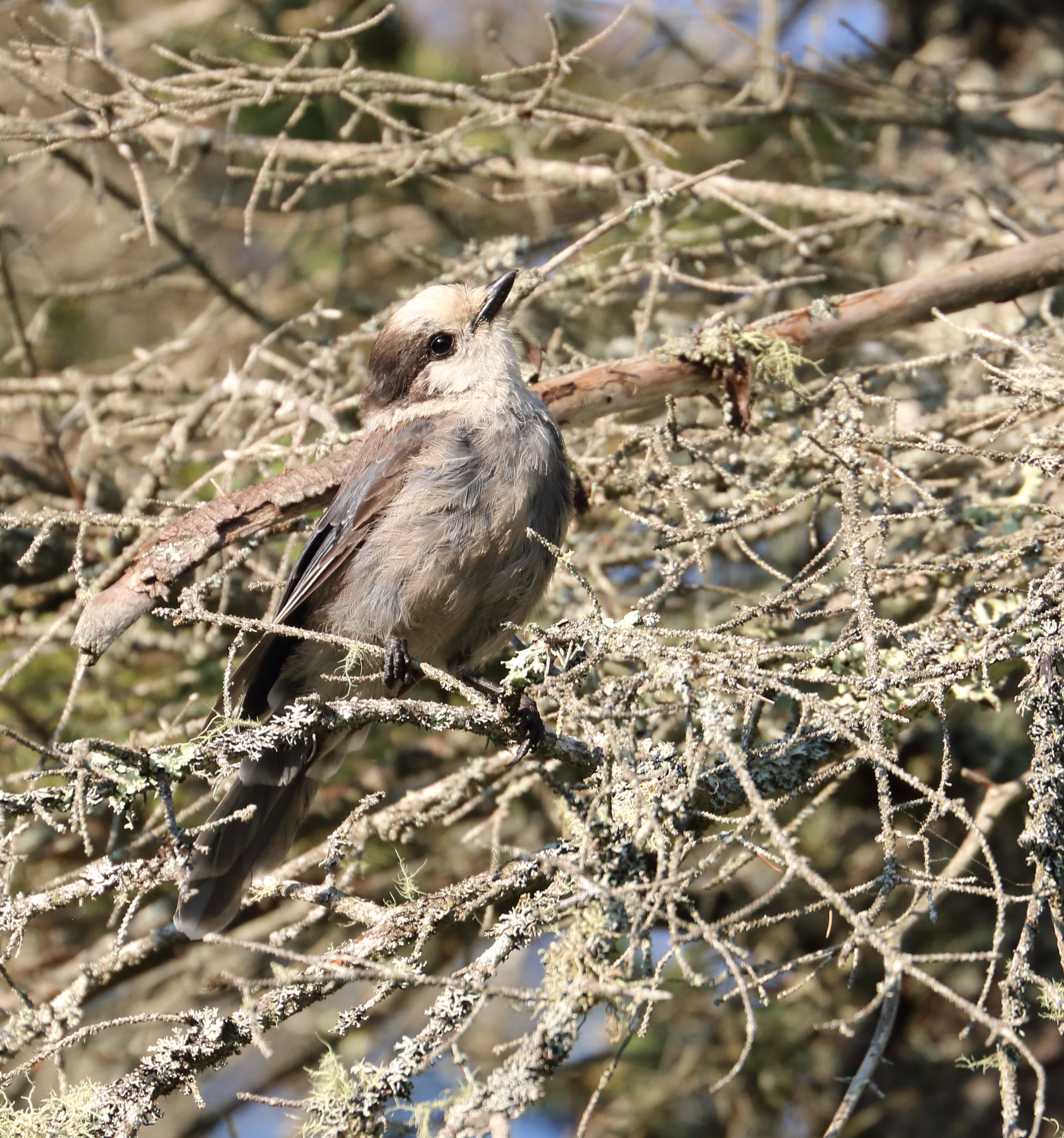
The Black-backed Woodpeckers, a northern species that I’d seen in my home state of Montana, proved more difficult to observe. Several times, I spotted woodpeckers flying from stands of dead trees a second too late, with only a distant call confirming that these were Black-backeds. My frustration was short-lived, however, as a third one of my target birds revealed itself to me about three miles down the trail.
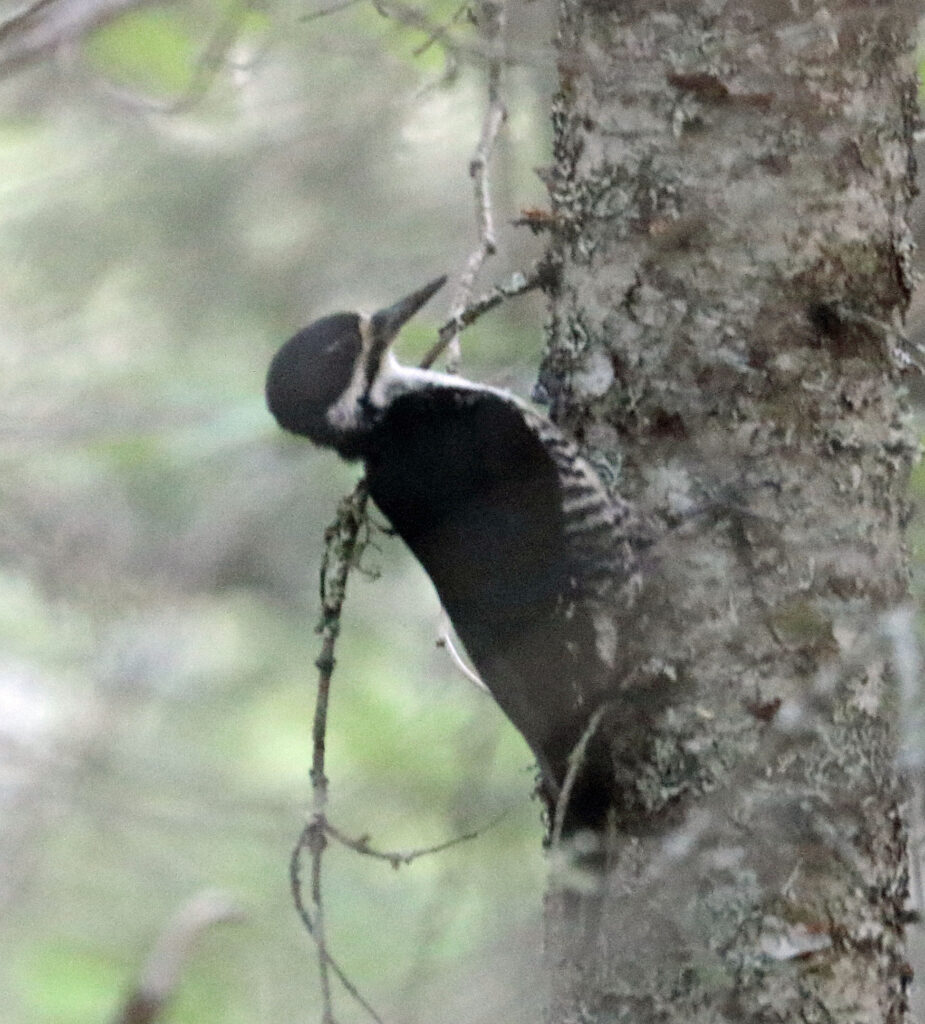
Speaking of Montana, most of the birds that birders target in the Adirondacks also occur out West. One exception: Yellow-bellied Flycatcher, the last widespread Empidonax flycatcher I had yet to see in the United States. After some false alarms from similar-sounding Least Flycatchers, I finally nailed down a Yellow-bellied singing and flycatching from a bush adjacent to a wet meadow. I snapped a few photos of the life bird, admiring its darker yellow belly and thick eye-ring that set it apart from the other possible flycatchers in the area. Of course, the main identification feature I used to tell it apart was its song, a brief “che-bunk”.
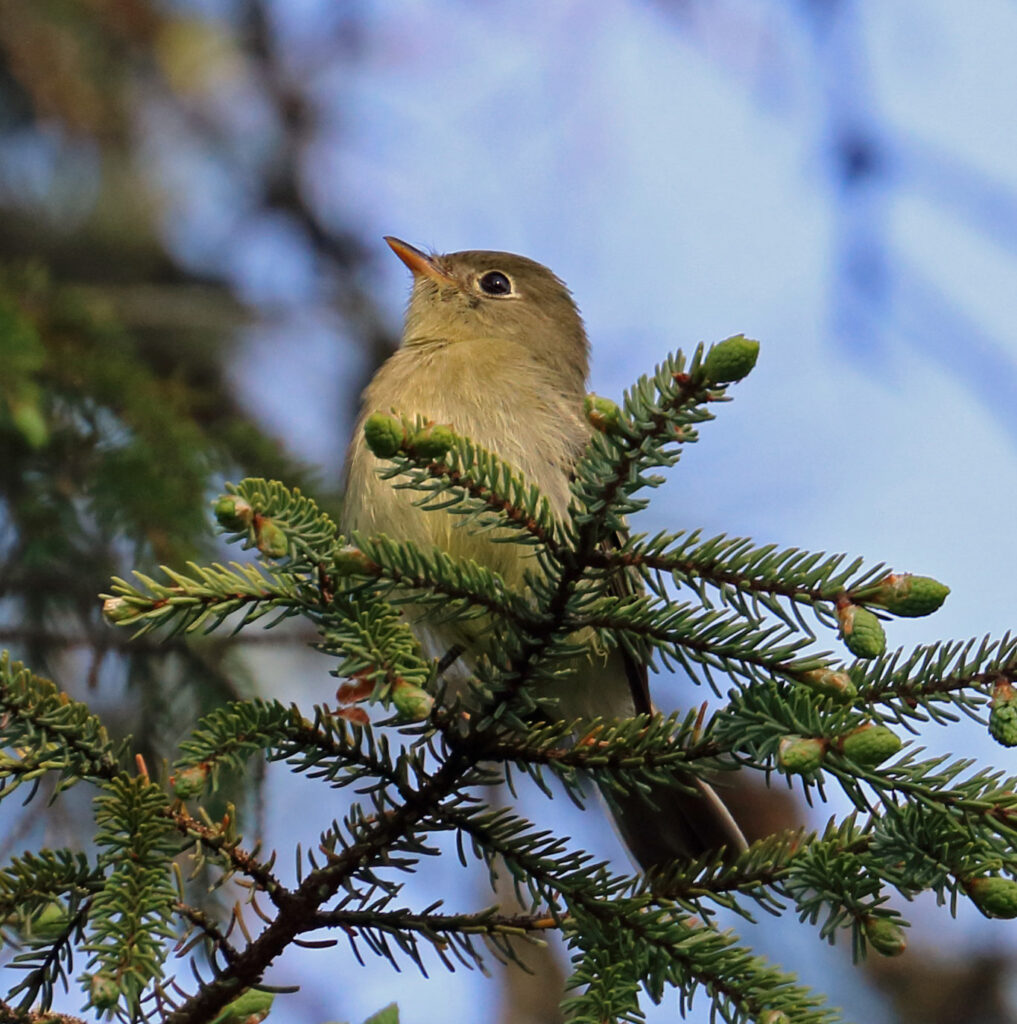
The Bloomingdale Bog and Whiteface Mountain filled up my birding meter for the day, and I returned to Lake Placid, the mountain town where my AirBnB was located, to spend an evening relaxing and exploring the small downtown. Two themes stuck out in the store names and art pieces of the town, and they were both seasonal. Firstly, Lake Placid had been the site of not one but two Winter Olympic Games, and a large museum and shopping mall had been erected in the middle of town to remind all tourists and residents of this. The AirBnB I would be staying at for three nights sat next door to the Lake Placid Olympic Training Center, and I drove past several event sites including a large ski jumping complex.

Every business not named for the Olympics had the number “46” in it somewhere. I learned from a small magazine in the Lake Placid Public Library that this referred not to the 46 presidents (to date) of the United States, but to the 46 “High Peaks” of the Adirondacks—those over 4,000 feet. Inconveniently, three of the mountains had been subsequently shown to be less than 4,000 feet while another 4,000-footer had been completely overlooked. Nonetheless, mountaineers ignored these revisions and focused on the original 46. According to the magazine, approximately 13,000 people from ages 8 to 76 had climbed every peak to become a member of the “46ers Club”. Many of these 46ers finished by climbing Whiteface Mountain so their families could drive up and join them on the summit.
Of even greater interest than the 46ers Club, Chimney Swifts wheeled over downtown, while Mirror Lake State Park held a pair of nesting Common Loons. In fact, I would soon find out that every lake or pond in the area seemed to have its own breeding pair.
The next morning I found myself scanning the tall snags at the start of Blue Mountain Road for Olive-sided Flycatchers, another scarce boreal breeder that lived in the Adirondacks. I couldn’t locate any, but did manage to have a phenomenal time birding the twenty-mile dirt road that wound its way through three types of forest up to a town close to the Canadian border. Much to the delight of the mosquitoes and flies, I drove slowly with the windows down, listening and scanning for any boreal bird that wanted to show itself. My primary target was Spruce Grouse, which I did not see, despite seeing many signs of them—literally! This species is extremely range-restricted and endangered in the state of New York, and the only place it can be found is exactly where I was searching. On one part of Blue Mountain Road, I saw a sign posted every hundred meters about how sightings of Spruce Grouse should be reported immediately, as well as detailed guides to distinguish them from the much more abundant Ruffed Grouse (one of which I did see). I wasn’t too beat up about missing Spruce Grouse, though, since I’d seen a few in Montana and hoped to try again in August with my dad. Plus, I recorded fifty other species, including fifteen species of warblers and another Canada Jay. On one trail I walked I spotted moose tracks and a weasel!

That evening, I canceled my plans to relax and headed out in search of two target species that I hadn’t seen yet: Olive-sided Flycatcher and Boreal Chickadee. For an hour I walked a stretch of high-altitude highway where the chickadees had been reported but to no avail (although I did get to watch a very cooperative Black-backed Woodpecker forage for bugs), and visited a bog divided by an old railroad track that most certainly did not have Olive-sideds. I can’t be too upset, I thought as I drove into a sunset the color of a Blackburnian Warbler. While I’d missed a fair number of my targets, I’d gotten to cross a destination off of my bucket list as well as add a place to my “must return to” list. The Adirondacks definitely had that atmosphere of wilderness that so few places have these days, while at the same time having significantly fewer tourists than a national park. I knew I’d be back.

